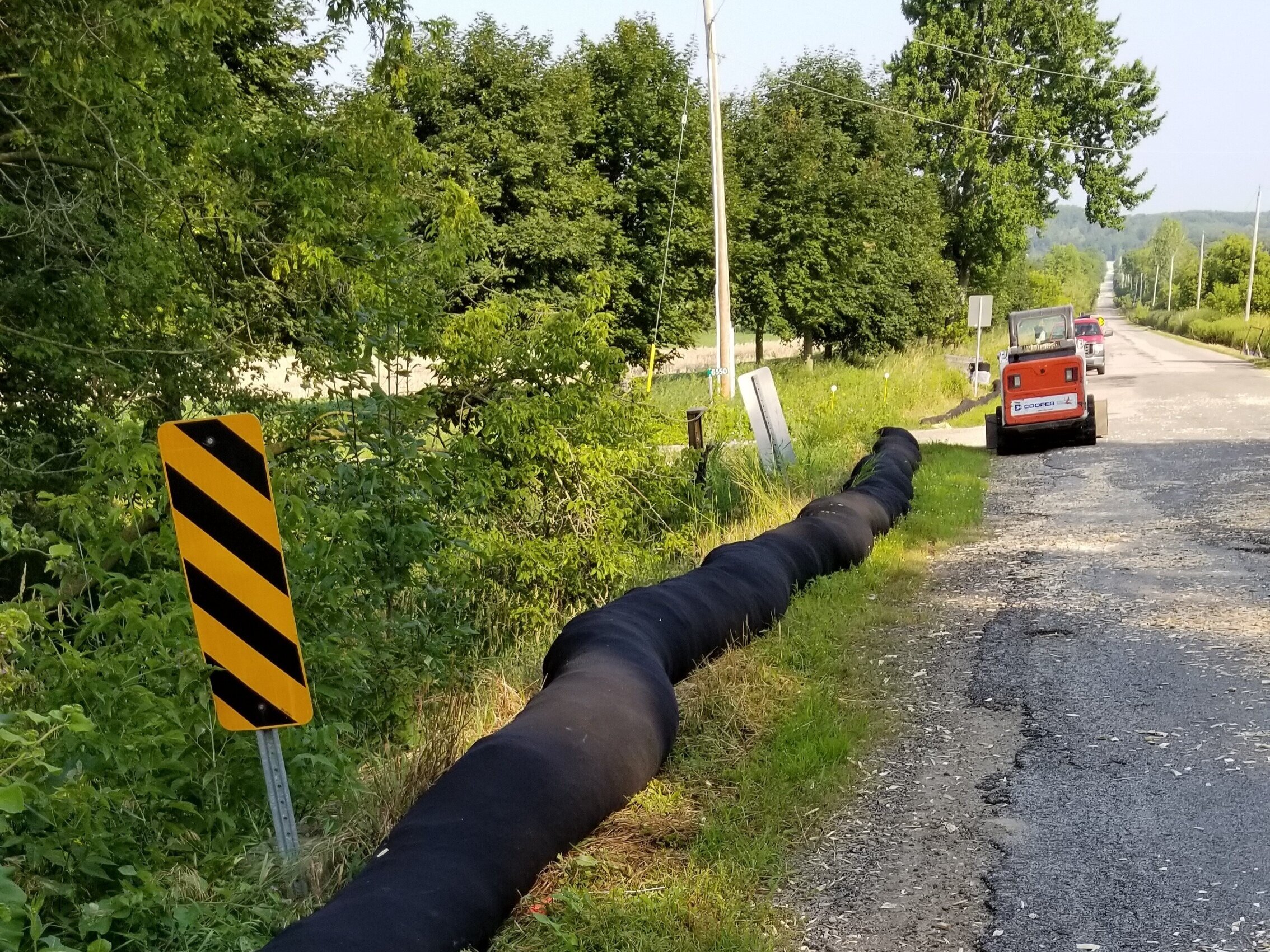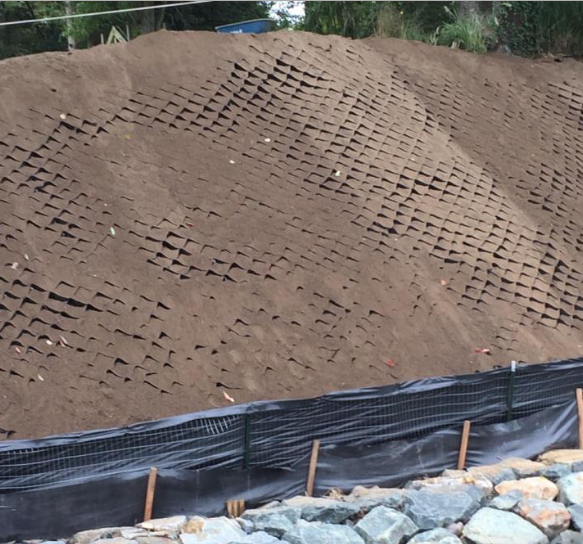Erosion Control Solutions: Safeguarding the Atmosphere
Wiki Article
Best Practices for Erosion Control in Building And Construction Projects
Are you servicing a construction task and concerned concerning erosion control? Look no further! In this short article, we will guide you via the ideal techniques for preventing erosion on your site. You'll uncover five necessary strategies, efficient sediment and runoff administration techniques, key considerations for incline stablizing, and suggestions for safeguarding vegetation and soil. We'll additionally dive right into the value of executing correct drainage systems. Get prepared to deal with erosion head-on and make certain the success of your construction job.5 Necessary Disintegration Control Methods

To properly manage disintegration on your construction site, you'll require to carry out important methods such as slope stabilization and debris control measures. Slope stabilization is important in stopping soil disintegration on steep slopes. You can attain this by utilizing methods like terracing, which entails producing horizontal actions on the slope to decrease water circulation and promote the absorption of rainwater. One more efficient technique is using erosion control coverings or mats, which are positioned on the slope and help maintain dirt particles while allowing plants to expand. Sediment control steps are additionally vital to stop debris runoff into nearby water bodies. One efficient approach is the setup of silt fencings along the boundary of the building website. These fences act as obstacles, capturing sediment-laden water and allowing it to resolve prior to it reaches the water bodies. Additionally, you can make use of debris containers, which are temporary retention ponds designed to catch sediment and enable water to gradually drain pipes off. Applying these essential erosion control methods will aid minimize the unfavorable environmental influence of your construction project and make sure conformity with guidelines.
Efficient Debris and Drainage Management

You can efficiently handle debris and overflow in your building task by carrying out appropriate disintegration control steps. An additional important technique is the implementation of erosion control coverings or floor coverings. By executing these erosion control measures, you can successfully take care of sediment and drainage in your building project, reducing the influence on the environment and conforming with governing requirements.
Key Considerations for Incline Stabilization
When thinking about incline stabilization, it is essential to evaluate the surface and determine potential locations of instability. You need to thoroughly analyze the incline's characteristics, such as its make-up, angle, and drainage patterns. Seek indicators of erosion, such as subjected roots, cracks, or slumping dirt. These signs can offer you a concept of where stabilization procedures might be needed.When you have identified the unstable areas, you can begin implementing procedures to support the slope. One common approach is the use of maintaining walls or terracing to create a collection of flat steps, which can help disperse the weight browse around here and protect against further disintegration. Another alternative is to grow vegetation on the slope, as the roots can aid secure the soil and control disintegration. Furthermore, setting up disintegration control blankets or floor coverings can offer instant protection while vegetation becomes recognized.
It's important to routinely check the supported slopes to guarantee their efficiency. Watch out for any kind of indications of motion or erosion, and take instant activity if necessary. Normal upkeep, such as examining and fixing any type of broken measures, is additionally vital to guarantee long-term security.
Ideal Practices for Plant Life and Soil Security
One efficient method to safeguard vegetation and soil on slopes is by routinely looking for signs of disintegration and taking immediate action if essential. By being watchful and mini garden landscape aggressive, you can avoid more damage and ensure the security of the slope. Start by inspecting the incline for any indicators of erosion, such as subjected roots, bare dirt spots, or sediment build-up at the base. It is critical to address the concern promptly if you notice any of these indicators. Implement erosion control steps such as installing disintegration control coverings, mulching, or perhaps constructing maintaining wall surfaces if needed. Furthermore, planting plants can substantially aid in maintaining the soil. Select native plants that have deep origin systems, as they are a lot more effective in preventing disintegration. Make certain to regularly evaluate the wellness of the greenery and provide essential upkeep, like watering and fertilizing. Remember, erosion can rapidly get worse and trigger severe damages, so it's important to address it immediately. By taking positive measures and regularly keeping track of the slope, you can secure the vegetation and dirt, making sure the long-term security of the area.Executing Appropriate Drain Systems
To successfully carry out appropriate drain systems, it's vital to consider the incline gradient and dirt kind. Recognizing these elements is necessary when it comes to taking care of water flow and protecting against erosion. The incline gradient plays a substantial function in establishing exactly how water moves throughout the land. Steeper slopes can lead to quicker water flow, enhancing the threat of erosion and flooding. On the other hand, gentler slopes permit water to stream a lot more slowly, reducing erosion possibility. By examining the slope gradient, you can design a reliable water drainage system that accommodates the natural water motion.Dirt type likewise influences drain system design. Various soil kinds have varying levels of leaks in the structure, affecting exactly how water is taken in and drained. As an example, sandy soils often tend to drain pipes faster due to their rugged appearance, while clay soils have a slower drainage rate because of their small nature. Understanding the soil kind helps in selecting suitable drainage strategies, such as making use of absorptive materials or setting up French drains. Furthermore, considering the soil qualities helps avoid waterlogging, which can result in poor plant development and damages to frameworks.
Final Thought
In final thought, when it comes to erosion control in construction jobs, you should follow these best methods. Consider incline stabilization techniques to make certain the stability of the site. By complying with these essential methods, you can successfully manage disintegration and make certain the success of your construction job.To successfully manage erosion on your building and construction site, you'll require to apply essential techniques such as incline stabilization and sediment control procedures. Slope stablizing is critical in protecting against soil disintegration on steep inclines. An additional effective method is the use of erosion control coverings or floor coverings, top article which are positioned on the slope and aid retain dirt fragments while permitting plant life to grow. One more alternative is to grow plants on the slope, as the roots can aid anchor the dirt and control erosion. Implement erosion control actions such as setting up disintegration control coverings, mulching, or also constructing keeping wall surfaces if required.
Report this wiki page